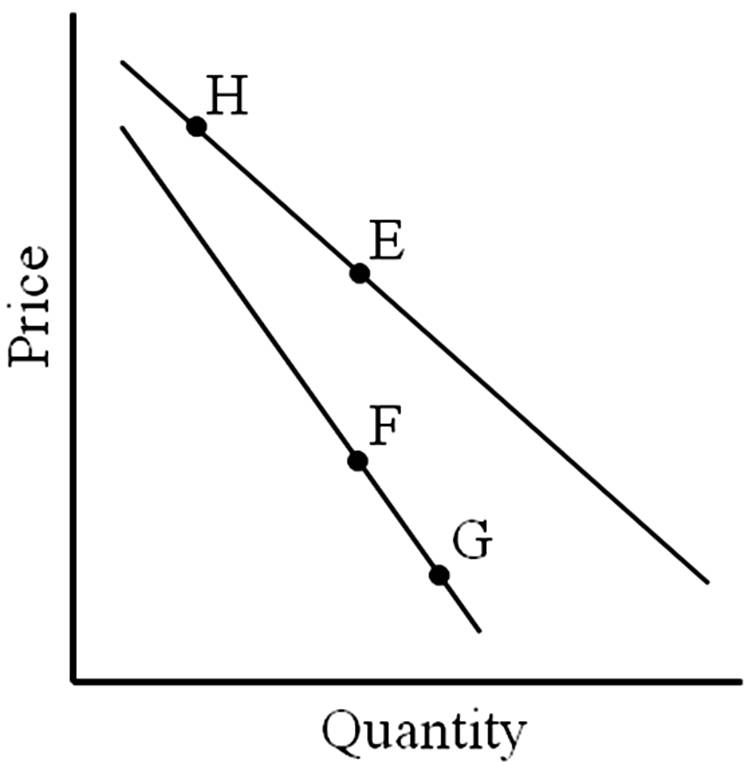A move from H to F represents

A. an increase in quantity demanded.
B. a decrease in quantity demanded.
C. an increase in demand.
D. a decrease in demand.
D. a decrease in demand.
You might also like to view...
Refer to the scenario above. If the size of population is same in both the countries, at the steady-state equilibrium:
A) the GDP per capita of country A will be higher than that of country B. B) the GDP per capita will be the same in both countries. C) the capital stock will be the same in both countries. D) the GDP per capita of country B will be higher than that of country A.
Economic growth is defined as
A) an increase in the nation's population. B) a sustained expansion of production possibilities. C) an increase in the wage rate. D) a decrease in the rate of inflation. E) an increase in employment.
In macroeconomics, we analyze
a. all of the following b. the overall performance of the economy as a whole c. arrangements through which specific products are exchanged d. influences on the decision making of particular households e. the factors that affect the decisions of individual firms
If we assume that a unit of capital will last indefinitely, the marginal rate of return on investment equals the marginal revenue product of capital divided by its marginal resource cost
a. True b. False